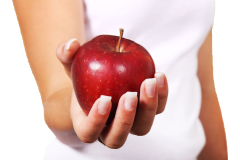Ferment it
Once your apples have been turned to mush, place them on your muslin cloth. Then place the muslin cloth containing the pulped apples into your cider press. Your press should have a hole in its base that will let the juice flow down, to be collected in a container placed below the press. The muslin cloth keeps larger pieces of apple from escaping or clogging the drain hole.With the cloth in place start winding the jack and the flat piece of timber will apply pressure to the bundle. Soon the juice will be flowing.
Take the collected juice, and transfer it to the large bottle. At this point you may add the sodium metabisulphite (Na2S2O5). This will kill off most of the yeasts, moulds and bacteria that are present in your apple runoff, that could otherwise potentially ruin your drink.
This of course will kill the yeast you want to work on your mixture, so wait about 24 hours and it will have completed its task. Then it will be safe to add your yeast. You will want to close the bottle, to protect it from dirt, and flies and such, but you cannot just screw on the lid.The yeast reacting with the sugar will produce carbon dioxide (CO2) and this must be released somehow. You could attach a piece of tube to the lid of the bottle, then run the tube into a bowl of water, at a lower level than the bottle. Or you could purchase an attachment that works on this principle.
Another option, for the lazy is to attach a balloon to the top of the bottle. This will keep the outside air outside and it will fill up with the carbon dioxide. It may need to be emptied once in a while.
After a week or so, you might now have a large bottle of cider. The solution, however, may be quite acidic. So it is at this point you can add the calcium carbonate (CaCO3) which is basic. Add a little at a time as it will fizz the contents of the bottle.
Much of the information on this page was gleaned from a set of instructions on instructables.com
You are now ready to move on to bottling for storage.
